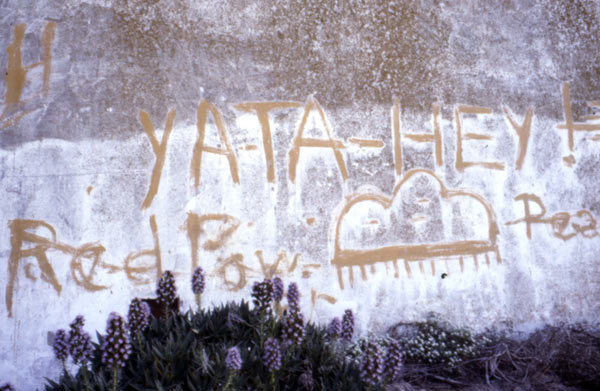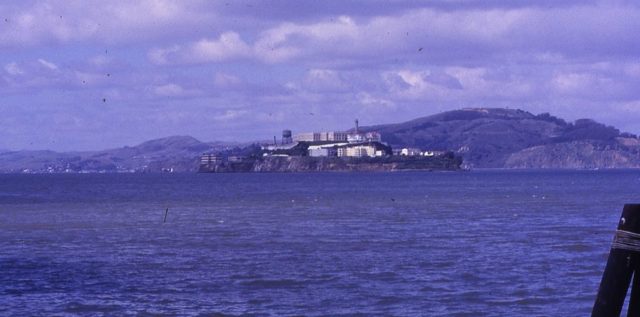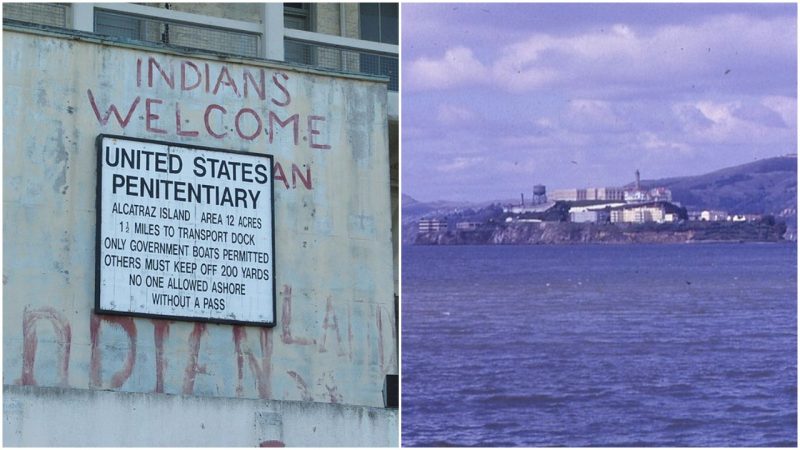The Alcatraz Federal Penitentiary was a maximum high-security prison located on Alcatraz Island in San Francisco Bay, a mile offshore from San Francisco.
It was notorious for holding some of the most vicious and ruthless criminals, including Alvin “Creepy” Carpis, George “Machine Gun” Kelly, and Al Capone. The prison buildings were in poor condition for a number of years, and the maintenance costs were too high, so the prison was closed in March of 1963.

After the closure, Alcatraz became the epicenter of a heated disputed that lasted for almost a decade. Namely, in 1868 a treaty was signed by the United States and the Lakota Natives; the treaty dictated that all retired or abandoned federal land was to be given back to the Native people from whom it was taken.
The first occupation happened in March 1968 and lasted only four hours. A group of Sioux arrived on the island and publicly offered the government a petty sum of money to buy the whole island. This was their way of criticizing the U.S. policy towards natives: the amount they offered was equal to the one that the government offered them when the United States claimed their land.
The protesters left the island when they were threatened with federal felony charges, but the symbolic occupation raised public awareness of the maltreatment of Native peoples.

The full-scale occupation started on November 20, 1969, when 89 natives boarded boats and set out with the intention of claiming Alcatraz Island. The Coast Guard stopped most of the natives, but 14 managed to reach the island, and over the next few weeks they were joined by many natives and non-natives. At the height of the occupation, 400 people protested the segregation of Native Americans and demanded rights for the land that was taken away from them.

The occupation campaign was led by Grace Thorpe and a group of native university students. Many celebrities including Marlon Brando, Jane Fonda, and Dick Gregory visited the island to show their support of the cause. The famous band Creedence Clearwater Revival donated $15,000, and the money was used to buy a boat which was to be used as a secure transport to and from the island.
The occupation lasted for 19 months and was finally dismantled by the government when electric power and telephone service were cut off. Prior to that some events had already damaged the integrity of the occupation: a 13-year old daughter of a couple involved in the occupation fell to her death from one of the island’s cliffs, and non-native tramps and drug addicts, oblivious of the cause, started arriving on the island to use it as their temporary home.

The occupation was unsuccessful because the island was never returned to the natives, but it was successful in raising awareness of the unfavorable position of Native Americans.
Read another story from us:Prisoners who escaped Alcatraz in 1962 could have survived
The outcome of the occupation sparked a surge of Indian activism and was instrumental in the creation of many Indian rights groups that still thrive to fix a centuries-old injustice.
